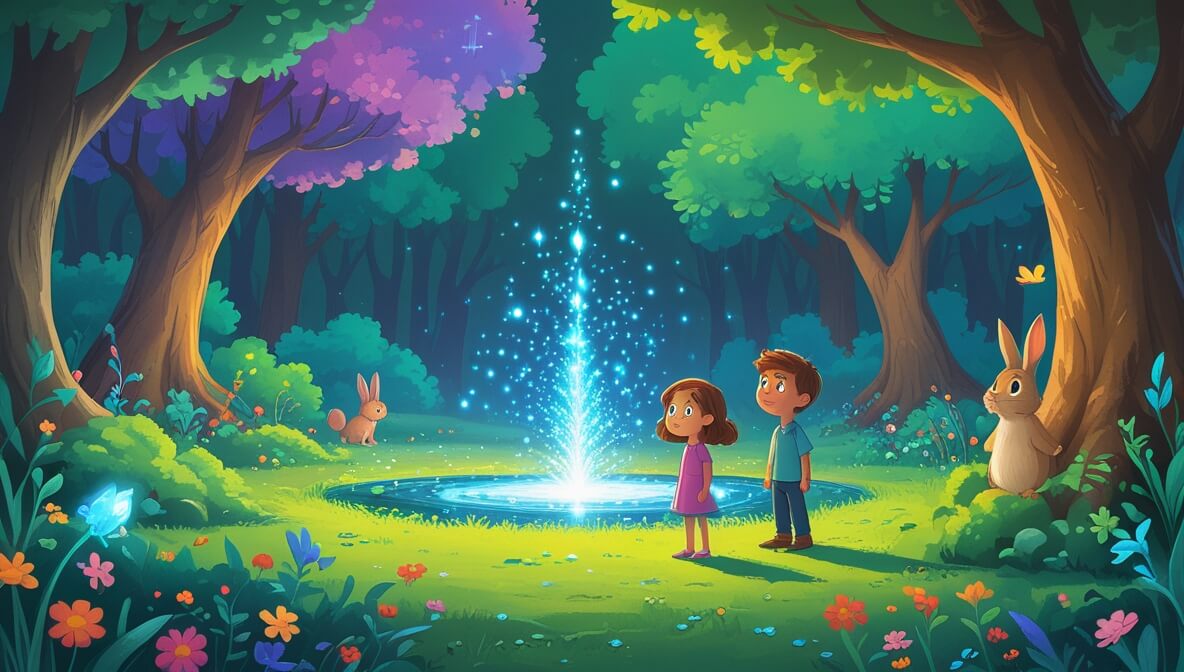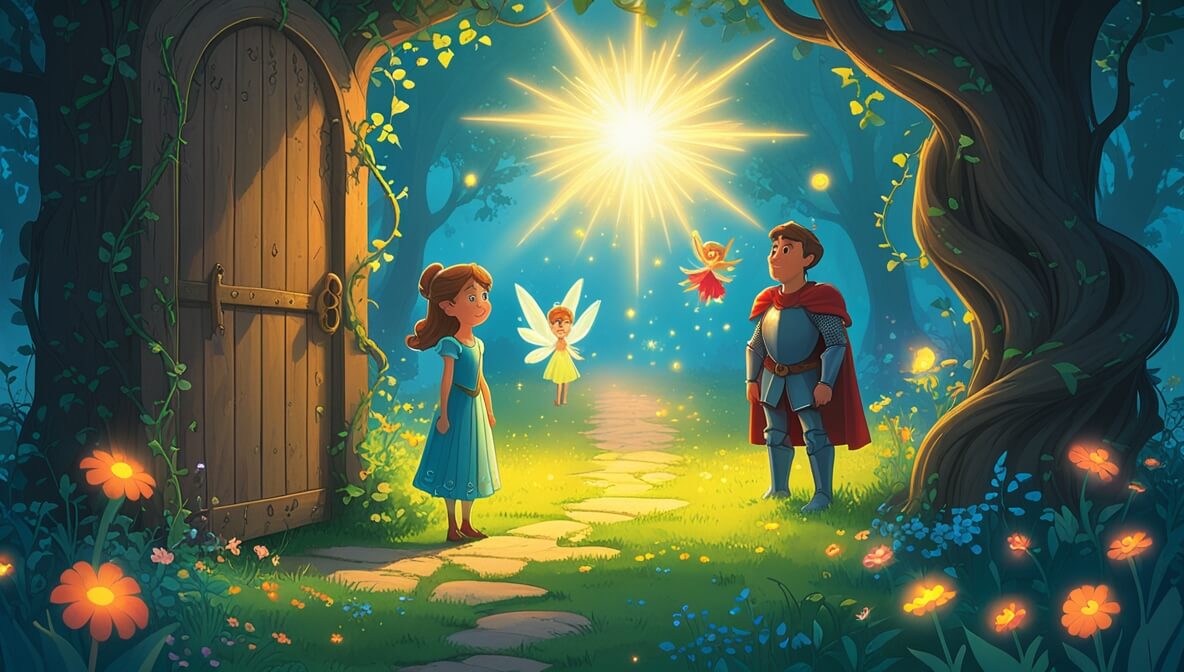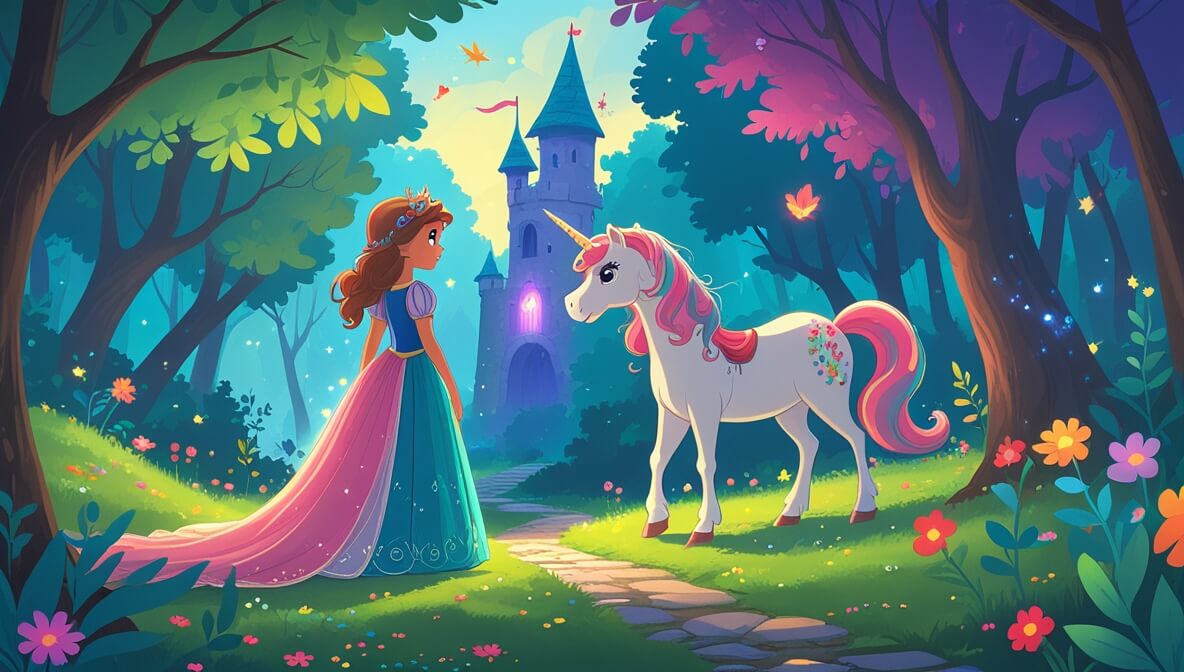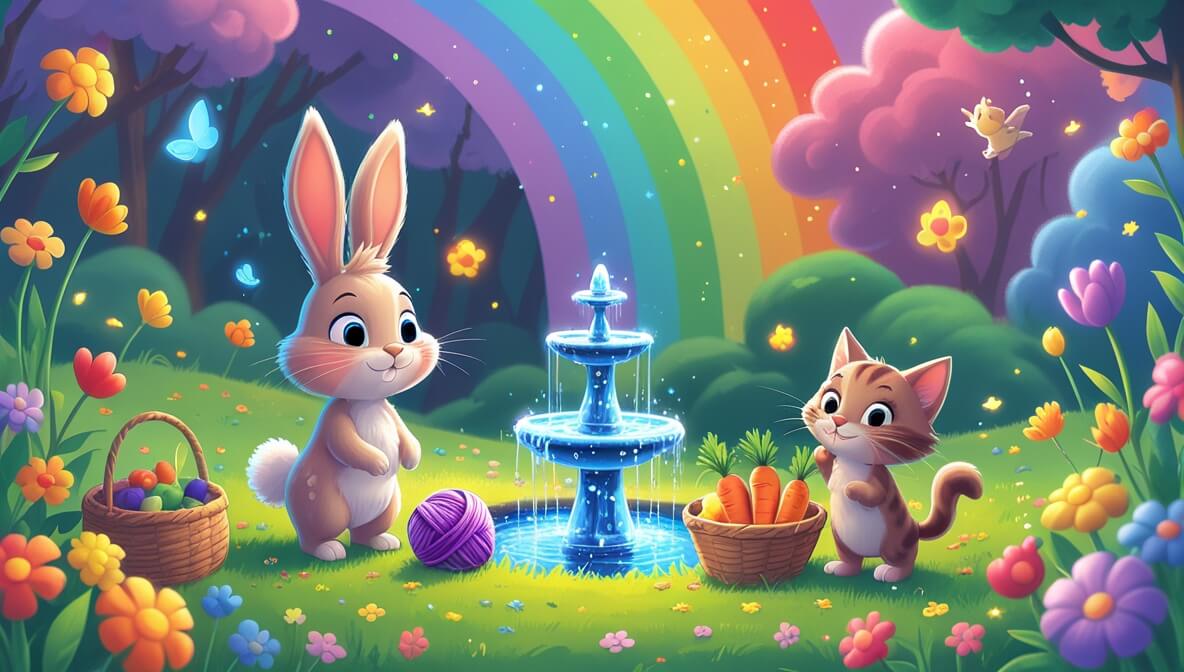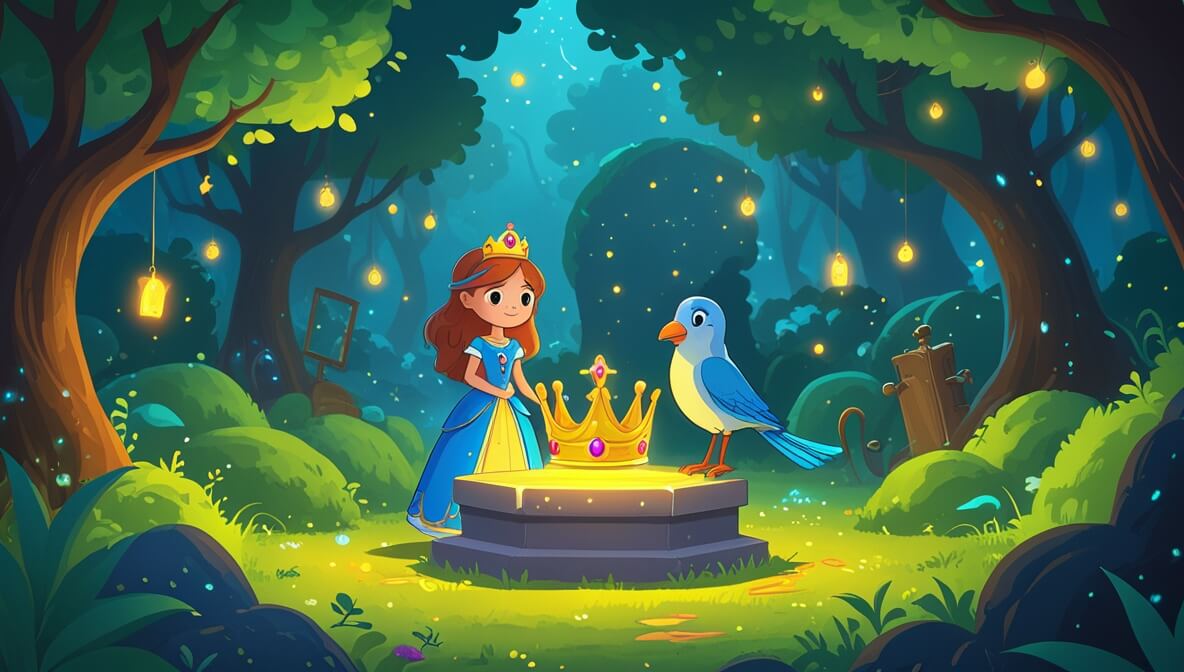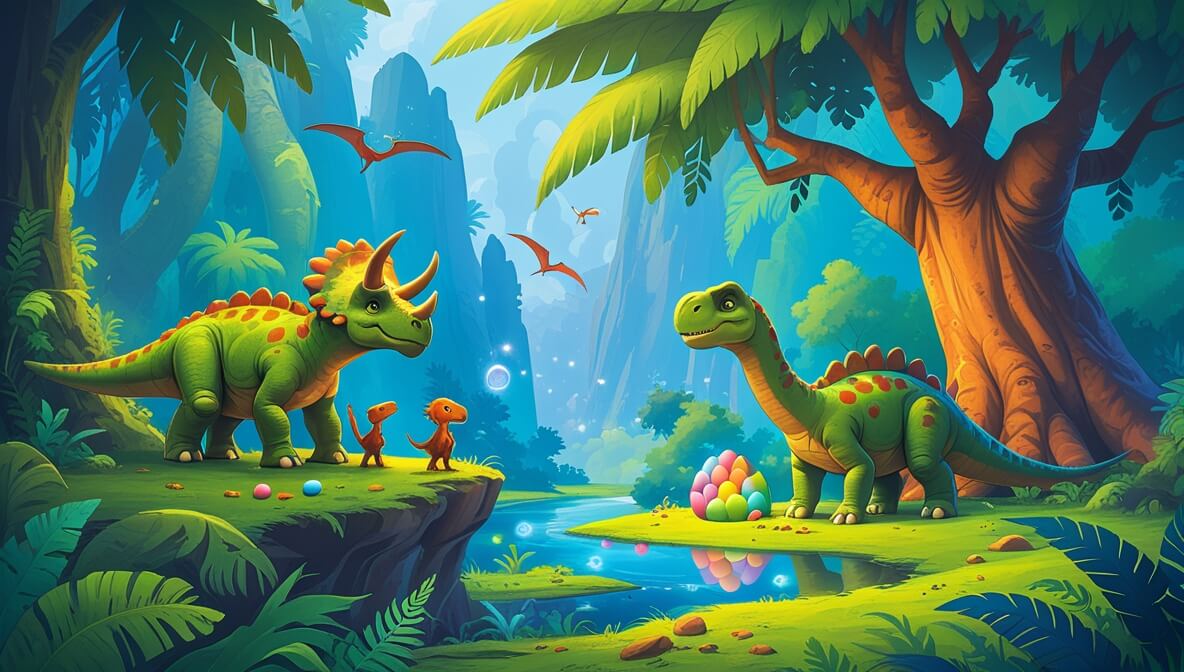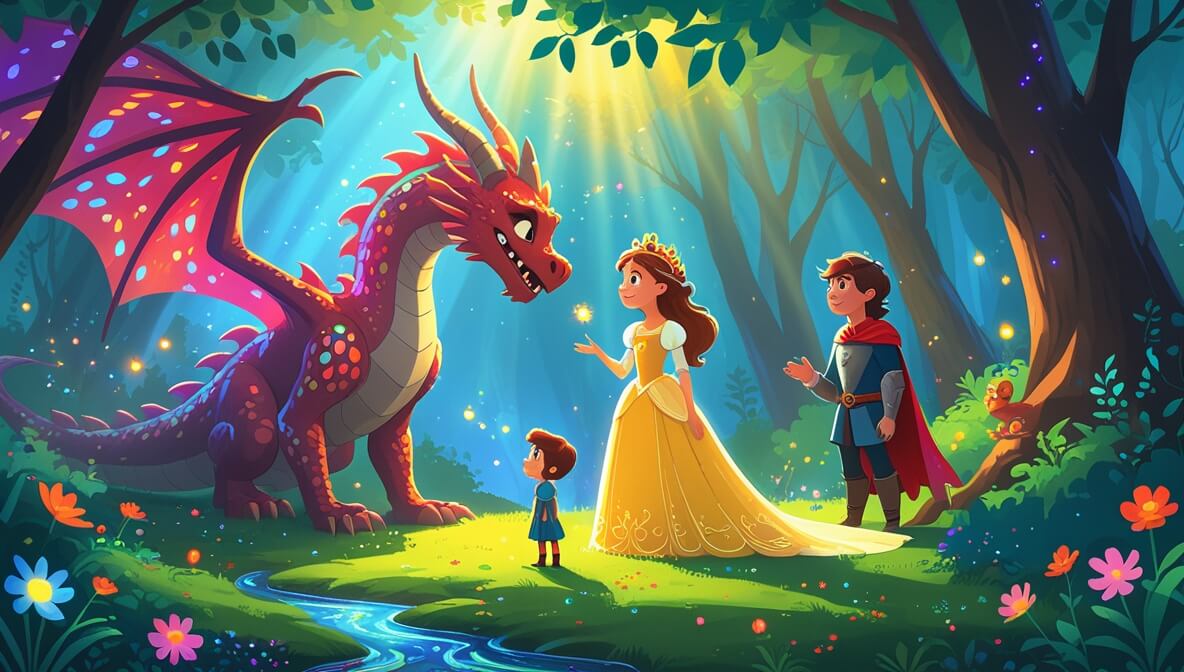In the cozy town of Willowbrook, young Max and Mia discover a mysterious map that leads them on an unexpected adventure, revealing an old secret about their beloved forest.
Age Recommendation
5 – 13 years
Characters
Characters:
- Max: A curious and adventurous young boy who loves exploring.
- Mia: Max’s clever and imaginative sister who loves solving puzzles.
- Mr. Whiskerton: A wise, talking rabbit who knows the forest like the back of his paw.
Story
Max and Mia were on their usual weekend stroll through Willowbrook Forest when Max tripped over something unusual. It was an old, dusty map tucked beneath the roots of a gigantic oak tree. Intrigued, Mia dusted it off and noticed a peculiar path leading to a spot marked with an ‘X.’ “Treasure, perhaps?” she mused with a twinkle in her eye.
The Map’s Secret
Max: Look at this, Mia! It’s a treasure map!
Mia: Or maybe… a map to a secret hideout? This looks exciting!
Max: We should follow it. Who knows what we might find?
They decided to follow the map, their hearts pounding with excitement. The map led them deeper into the forest than they had ever been before. As they walked, they discussed the possibilities of what could be awaiting them.
The Encounter with Mr. Whiskerton
Mia: Max, do you hear that rustling?
Max: It’s probably the wind… or maybe… a forest guardian?
Suddenly, out hopped Mr. Whiskerton, a rabbit with a coat as white as snow and eyes full of wisdom. He stood tall, as if expecting the children.
Mr. Whiskerton: Greetings, young adventurers! I see you’ve found the map.
Mia: You can talk!
Mr. Whiskerton: Of course, my dear. But more importantly, you’ve uncovered a piece of our forest’s history.
Max and Mia were astonished. Mr. Whiskerton explained that the ‘X’ marked the location of a magical spring that had been lost over the years—a spring that once kept the forest lush and vibrant.
Reaching the Magical Spring
Max: So, we’re on a mission to save the forest?
Mr. Whiskerton: Indeed. Follow the map, and you shall find the spring.
With Mr. Whiskerton as their guide, they ventured further. At last, they arrived at a beautiful clearing, where the sun kissed a sparkling pool of water. The sight was breathtaking.
Mia: It’s magnificent!
Max: Let’s make sure it stays this way.
The Return to Willowbrook
Mr. Whiskerton: You’ve done a great service to the forest, my friends.
Mia: And we’ve made a new friend!
Max: What an adventure! We should tell everyone about this amazing place.
With Mr. Whiskerton’s permission, they marked the spring’s location on the map so others could visit and appreciate the forest’s beauty. As they returned to Willowbrook, their hearts were full of joy and pride, knowing they had helped preserve something magical.
The end.
Moral of the Story
This story teaches the importance of preserving nature and the beauty of unexpected friendships. It reminds us that exploration can lead to wonderful discoveries, and that working together with friends can help us achieve great things.
Questions to Think About
- What might you discover if you explore your own neighborhood?
- How can you help take care of nature around you?
- What would you do if you found a mysterious map?
- Why is it important to protect magical places like the spring?
- If you could talk to an animal, what would you ask?
Do You Know
- Rabbits can actually communicate with each other using body language, such as thumping their feet or grooming!
- In many cultures, forests are considered magical places full of mystery and adventure.
Word Explorer
- Mystical: Something magical or very special.
- Adventure: An exciting or unusual experience.
- Preserve: To keep something safe or in its original state.
Emotions in the Story
- Excitement: When Max and Mia found the map and began their adventure.
- Astonishment: When they met the talking rabbit, Mr. Whiskerton.
- Joy: When they discovered the magical spring and helped preserve it.
Color Your Scene
Imagine the moment Max and Mia found the magical spring. Picture the bright sunlight sparkling on the water, the vibrant green of the trees, and the colorful flowers surrounding the spring. Draw this beautiful scene, using your favorite colors to bring it to life.
Parents’ Corner
This story is a wonderful way to discuss the importance of:
Environmental stewardship: Talk to your child about the ways they can help take care of nature, such as recycling or planting trees.
Friendship and teamwork: Discuss how Max, Mia, and Mr. Whiskerton worked together to achieve their goal, and how teamwork can help us accomplish more than working alone.
Curiosity and exploration: Encourage your child to explore their surroundings and ask questions about the world, fostering a love for learning and discovery.
Appreciation for nature: Use this story as a starting point to teach your child about the beauty and importance of natural environments and how they can protect them.

